For any camper van owner, completing the NC500 has to be high up on the bucket list! The scenery is absolutely stunning, and in many places you’ll be amazed that you’re still in the UK!
Knowing where to stop along the route can be overwhelming. Read on to discover my top recommendations for your Scottish adventure.
What is the nC500?
The NC500 is a famous driving route round the north coast of Scotland which measures just over 500 miles. It became an official route in 2014 and starts and finishes in Inverness, the capital of the Scottish Highlands. It has become very popular in recent years due to its stunning coastal scenery, white sandy beaches, rugged mountains and hidden gems.
The best time of year to drive the NC500 is between May and October, when the days are longer and there are more local businesses open in the area. The weather in the area can be unpredictable to say the least! You often have days where it feels like you’ve had all seasons at once, but all the rain helps to make the landscape so lush and green.
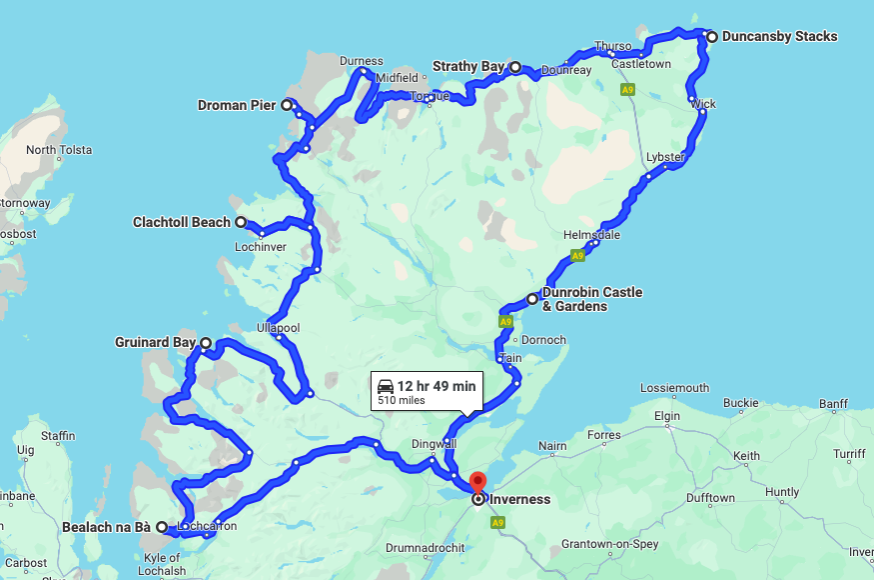
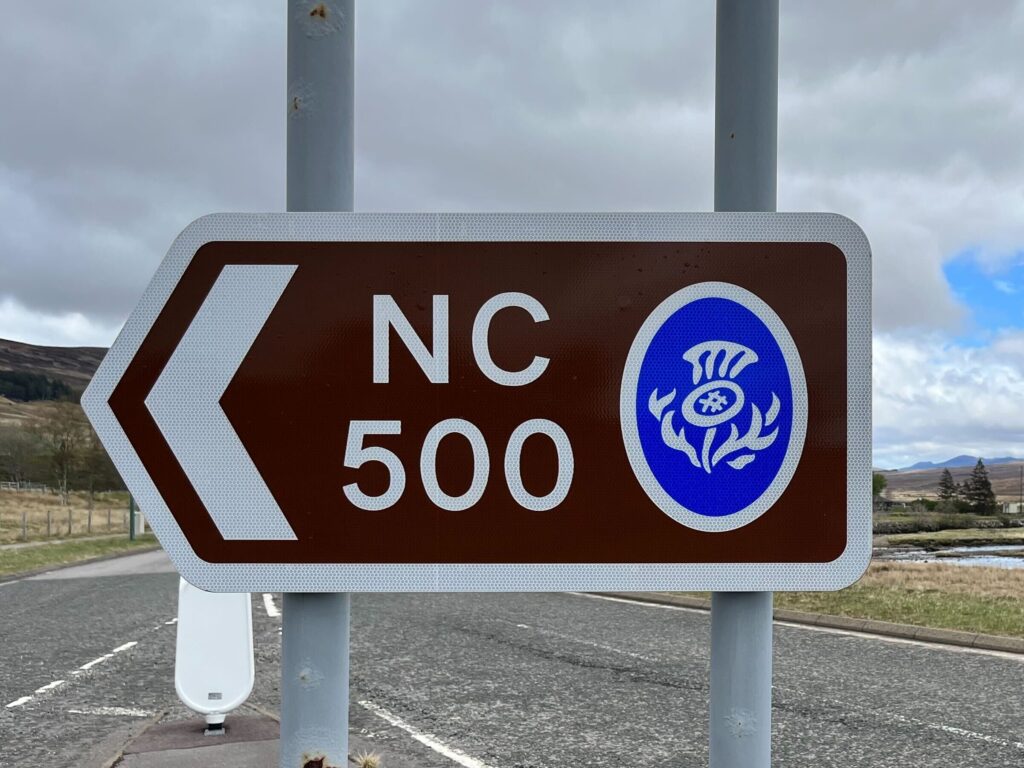
How long does it take to drive the NC500?
In reality, you could drive round the entire route in a day. But where’s the fun in that?
The minimum amount of time I would recommend is 5 days, but I’d say the optimum would be between 7 – 10 days. For those with the luxury of more time, a longer trip would allow you to detour to places like the Isle of Skye or the Orkney Islands.
If you’re starting in Inverness, I’d recommend heading up the east coast first towards John O’Groats, and heading round the route in an anticlockwise direction. The west coast was my absolute favourite part, so you would get to save the best til last! Read on to find out why…
What kind of wildlife is there on the NC500?
There is plenty of wildlife to spot during your trip! The famous highland cows are plentiful, and often occupy the roads in the quieter parts of the route. With their famous long horns and fluffy coats, they’re instantly recognisable!
There’s also plenty of other local wildlife such as deer, squirrels, pine martens and birds of prey. If you’re lucky, you may spot sea mammals such as dolphins, whales and seals off the coast!
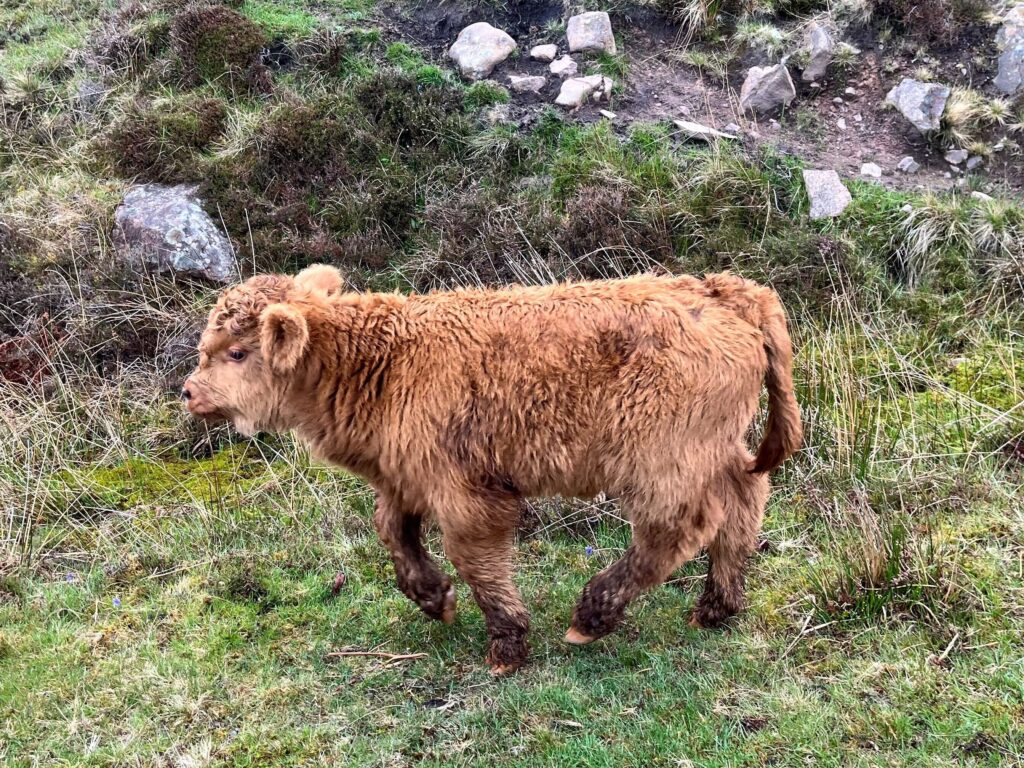
What Are My Top 7 NC500 Hidden Gems?
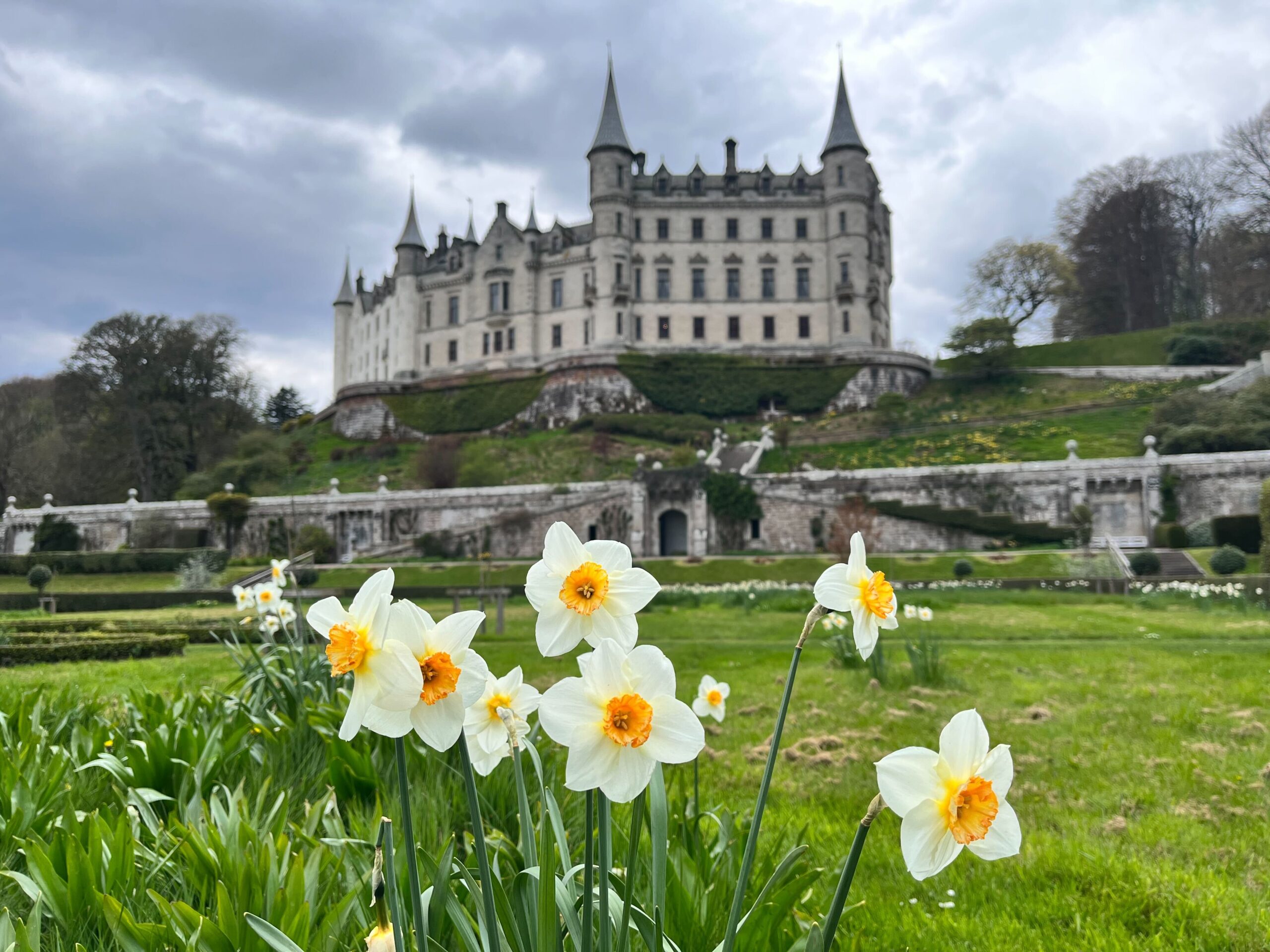
1. Dunrobin Castle
The beautiful Dunrobin Castle is the largest in the Northern Highlands. Dating back to the early 1300s, it is one of Britain’s oldest continuously inhabited houses.
The castle resembles a French chateaux and boasts a large victorian-style garden. A tour consists of a self-guided wander through the state rooms of the first floor, before exploring the smaller rooms in the older parts of the castle.
If you’re visiting during the months April – October, there are daily falconry shows in the gardens.
2. Duncansby Stacks
Situated at the most north easterly point on mainland UK, lies a rock formation out to sea known as Duncansby Stacks. This natural wonder can be found just along the coast from the famous John O’Groats sign post and is well worth a visit.
It is believed that these towering stacks are over 6,000 years old, and they really offer a magnificent backdrop to your coastal walk.
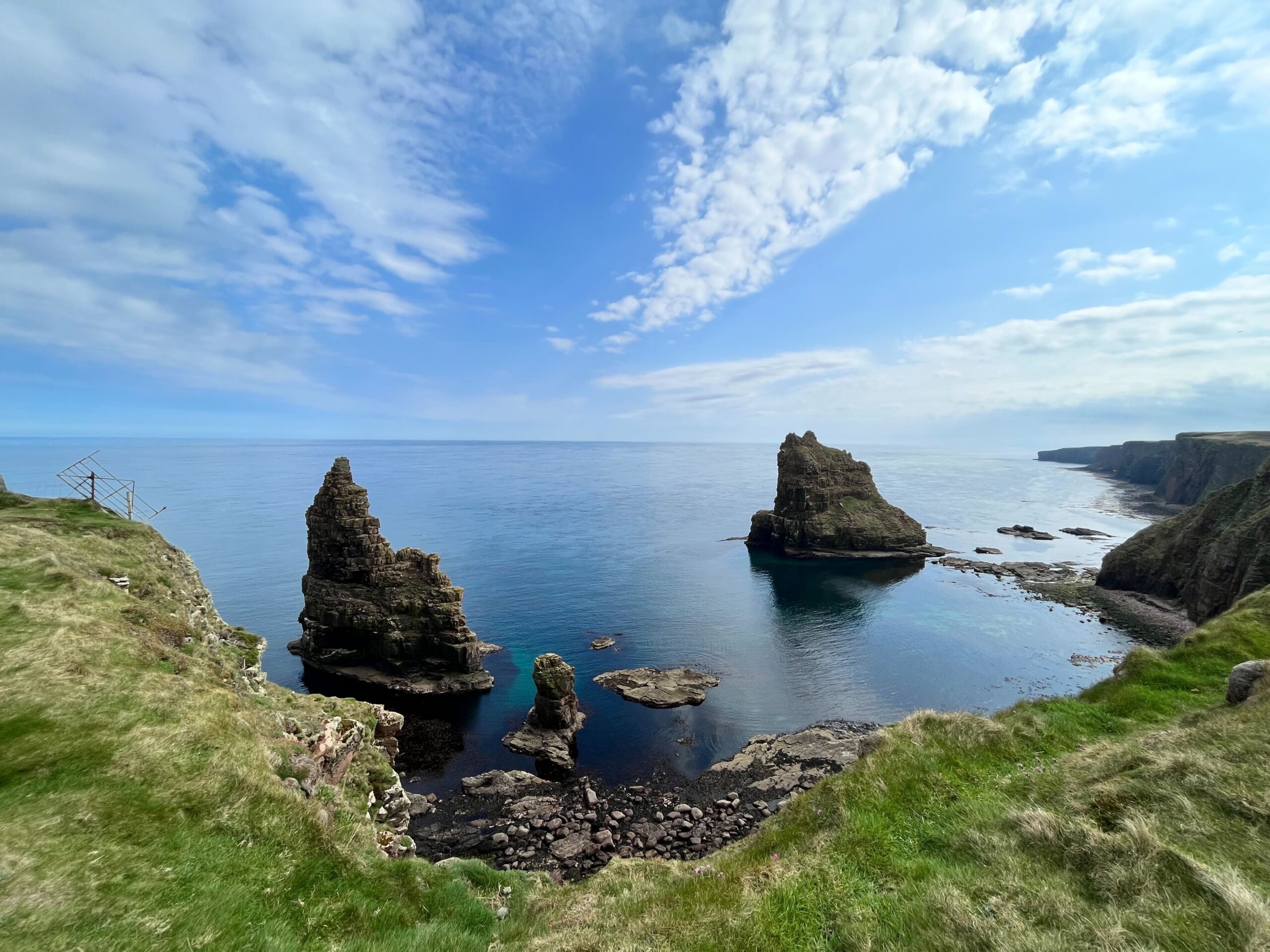
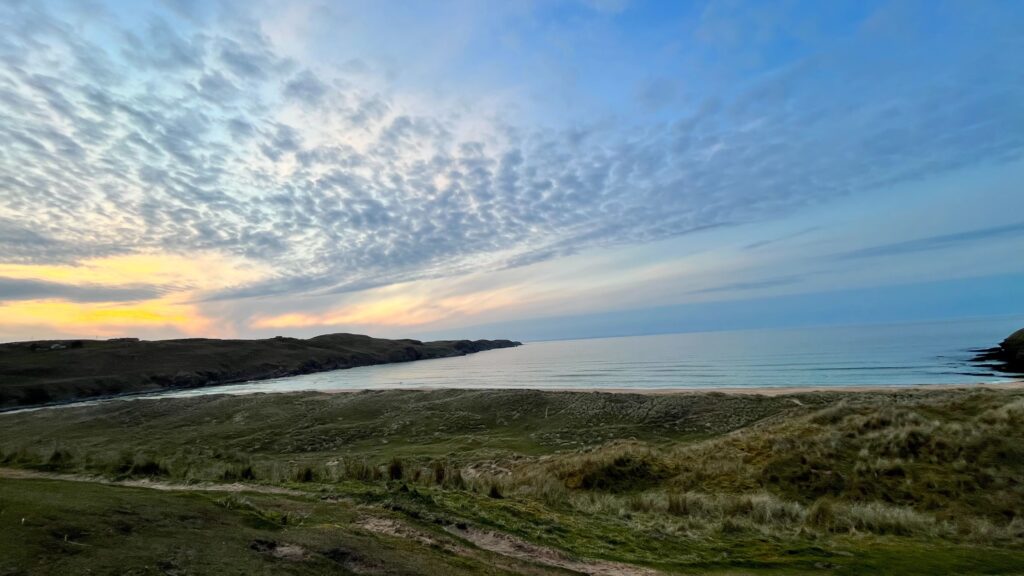
3. Strathy Bay
Hidden along the north coast of Scotland lies an enclosed, white sandy beach called Strathy Bay. Strathy Bay is surrounded on all sides by magnificent, hilly scenery and is also home to many caves around the beach and a number of sea stacks.
You can take a short walk to the top of the hill where you’ll find beautiful panoramic views of the area. At certain times of the year, the landscape is adorned with wildflowers and mesmerising colour. Bring your binoculars, and if you are lucky you may spot dolphins in the North Sea!
4. Droman Pier
One of my favourite wild camping spots along the NC500 was at Droman Pier. Parked up right by the water’s edge; waking up to the sound of the water lapping in the morning was delightful.
There are plenty of places to head out for a walk, and the views of the sea and surrounding areas are stunning. If you are lucky with the weather like I was, you’ll feel like you’re in New Zealand!
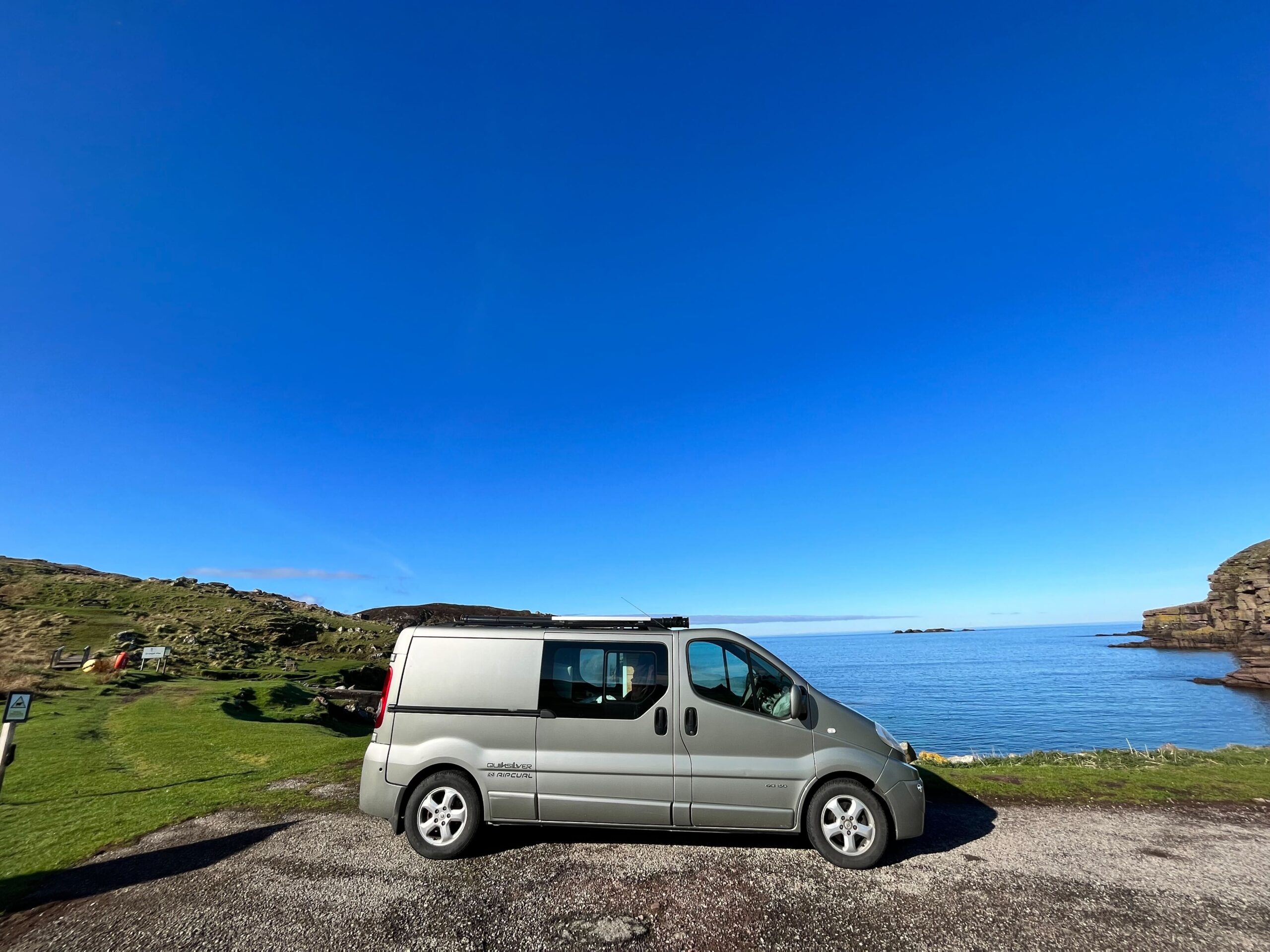
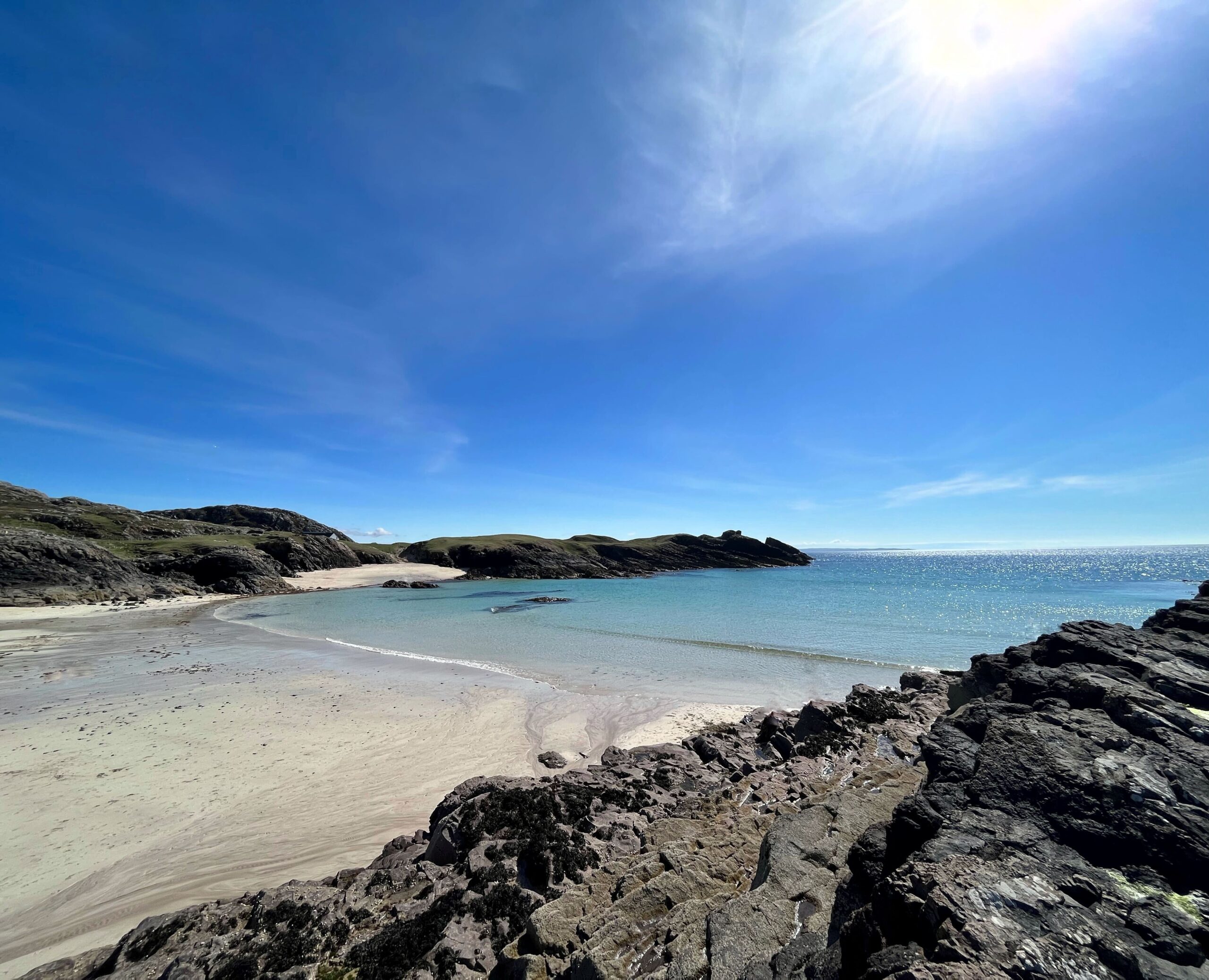
5. Bay of Clachtoll
You won’t want to miss Clachtoll Beach! With white sands and idyllic turquoise water, it is an unspoilt paradise in the Highlands.
Situated within Clachtoll Bay, the beach also offers stunning mountain views and interesting rock formations which often attract geologists from far and wide.
Why not take the opportunity for a dip in the crystal waters, or pump up the paddle board and head out onto the sea!
6. Gruinard Bay
Another must visit area on the NC500 is Gruinard Bay, which comprises of three absolutely gorgeous pink sandy beaches.
There are plenty of walking routes which offer spectacular views of the surrounding areas.
The sand on the beaches has a slight pink colour from the Torridon sandstone and for this reason is another place of interest to geologists.
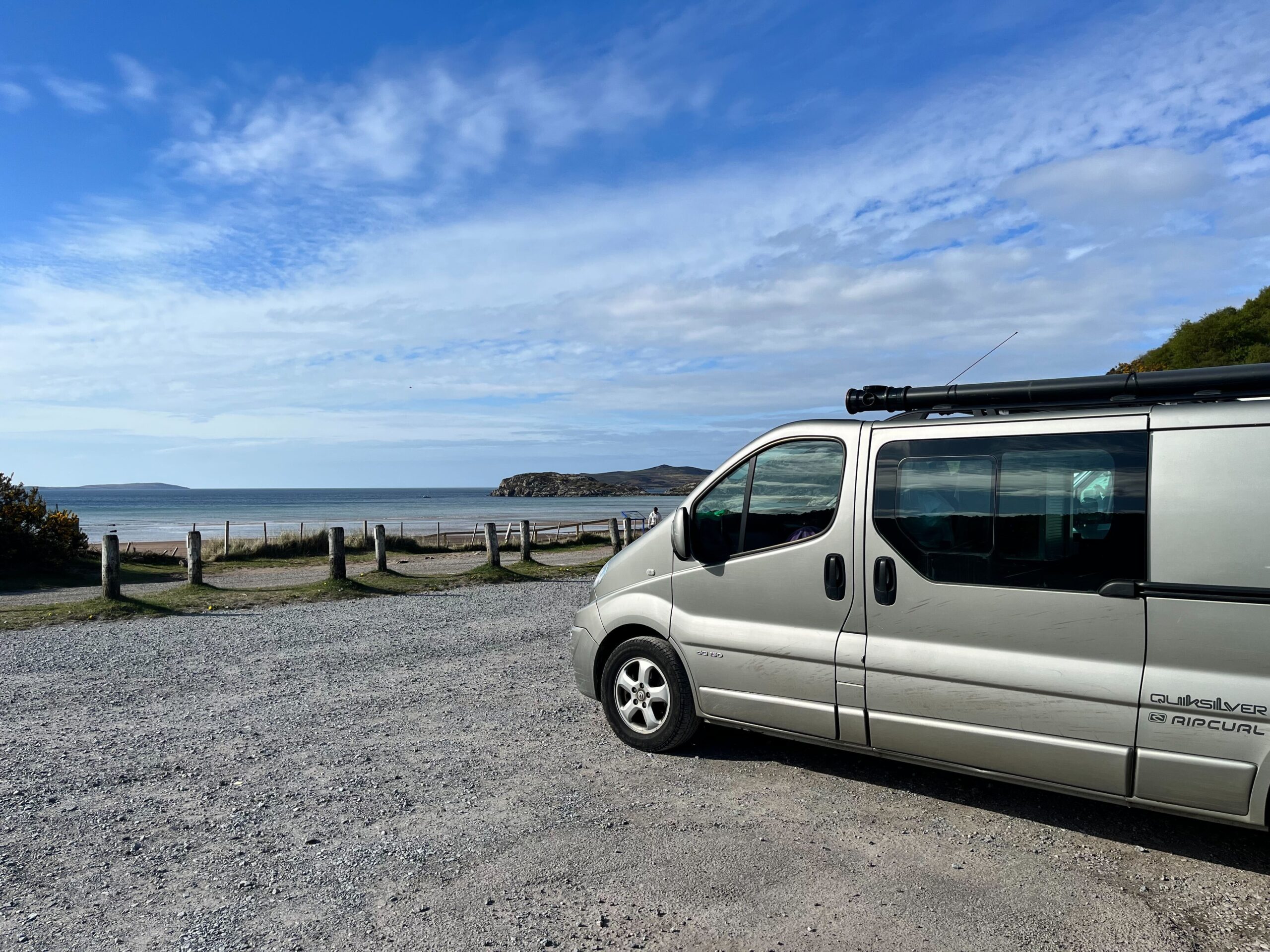
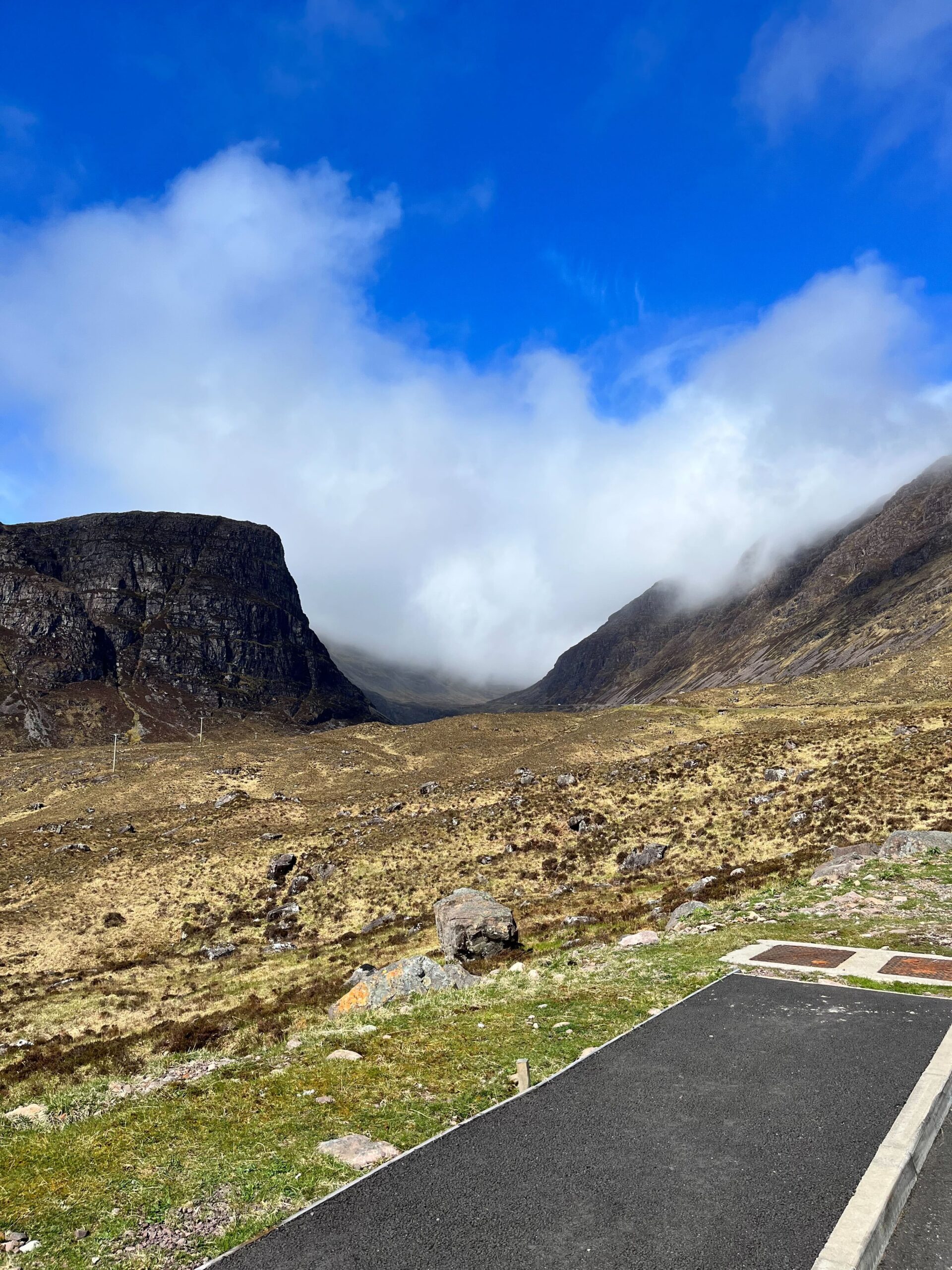
7. Bealach Na Ba
Last but not least, the most unforgettable part of the NC500 route was the Bealach na Ba pass.
The single track road rises over 600 metres and is known for its steep gradients and tight hairpin bends. It is not for the faint-hearted! Some gradients reach as much as 20% and there are vertigo-inducing drops in places.
Was it worth it? You bet it was! The views were simply incredible! It was wild, desolate, dramatic, and utterly beautiful.
There is an alternative route available, which should be taken for inexperienced drivers, caravans or those who do not have a head for heights.
I think you’ll agree, there are so many wonderful places to visit on the NC500, it was difficult to narrow the list down.
I hope the above hidden gems have inspired your road trip planning. Let me know your thoughts in the comments. Are there any other hidden gems that you would recommend?
Live Laugh Love ✌🏼

Fantastic article and with my own NC500 journey about to start, I found some inspirational
Ideas here.
Thanks Chris, glad you found it useful! I hope you enjoy your upcoming adventure! 🏴